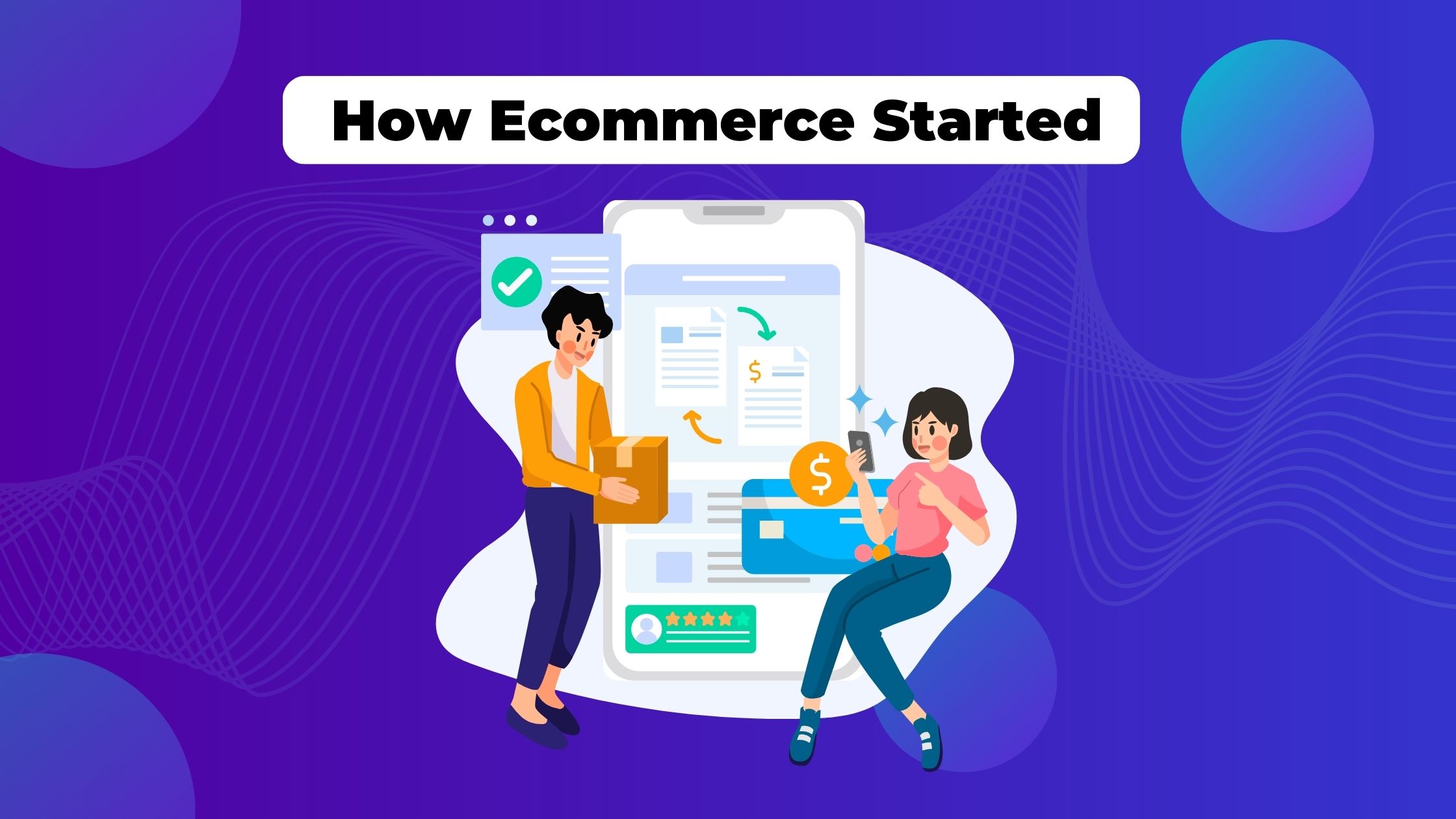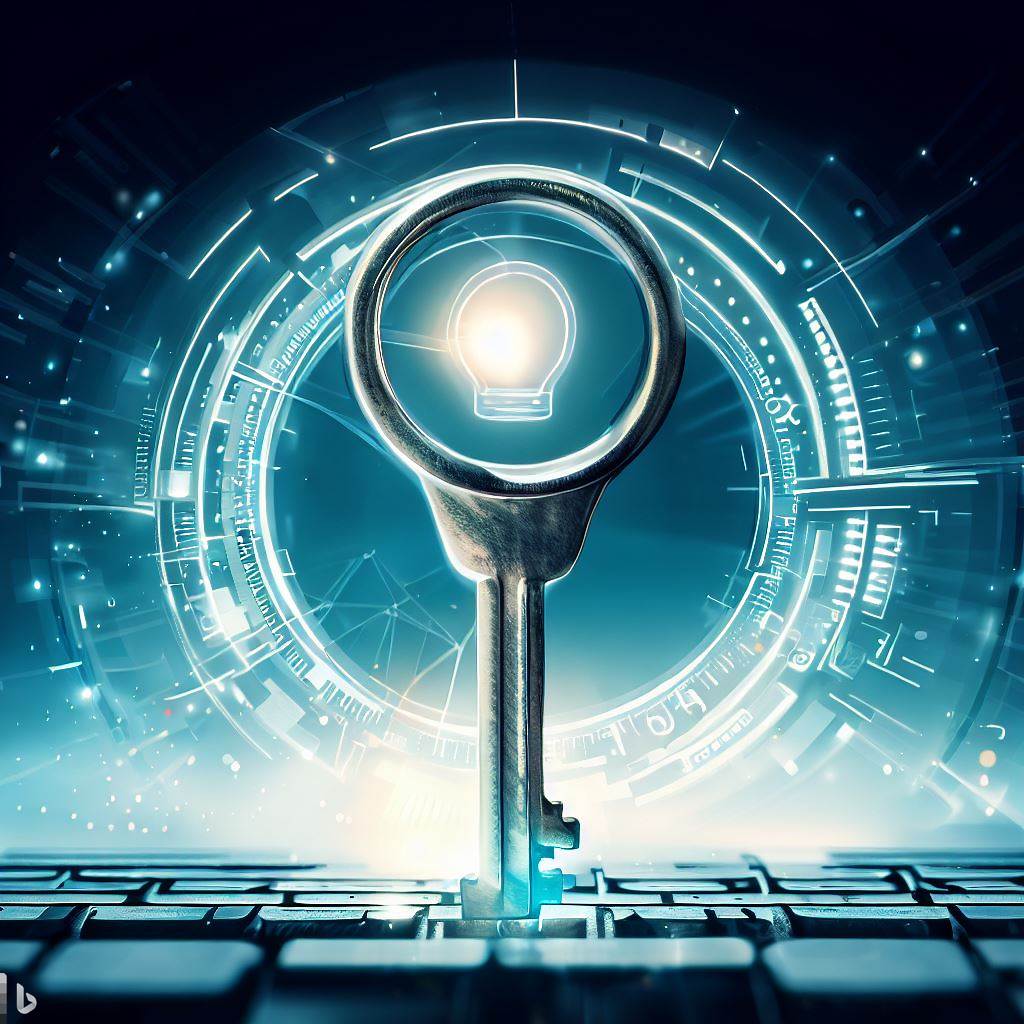How eCommerce Started: From Humble Beginnings To A Global Phenomenon
Do you remember the last time you bought something online? Maybe it was just five minutes ago, during a work meeting, when you sneakily ordered that new pair of headphones (we won’t tell!). Or perhaps, late last night when you thought, “Hey, I really do need that inflatable unicorn pool float!” The truth is, these days, most of us are so entwined with ecommerce that it’s almost impossible to remember a time when shopping meant getting out of our pyjamas.
Ecommerce, or electronic commerce, is simply the phenomenon of buying or selling things over the internet. It’s become as integral to our lives as that morning cup of coffee, and it’s brought about a seismic shift in the way the world does business.
But wait a second – when did this all start? Was there a “Big Bang” moment of ecommerce? And how has it evolved into the online shopping extravaganza we’re all too familiar with today?
So, if you’ve ever found yourself lying awake at night pondering the origins of your late-night online shopping sprees, you’re in the right place! We promise this trip down the ecommerce memory lane will be more exciting than your latest impulse purchase.
Get ready to dive deep into the digital universe of ecommerce – from the dawn of online transactions to the modern-day shopping revolution.
What is Ecommerce?
Before we continue our journey, let’s pause and answer a vital question: what is ecommerce?
Get you’re complete done for you eCommerce store professionally set-up here.
Ecommerce, or electronic commerce, is all about buying and selling goods and services over the internet. It’s that late-night shopping spree on your favorite online store or that swift booking for your next vacation. Essentially, if a commercial transaction occurs online, it’s ecommerce.
From retail giants like Amazon and eBay to auction houses and music sites, a broad spectrum of business types engage in ecommerce. Moreover, business-to-business transactions also occur electronically, demonstrating the breadth of ecommerce’s reach.
In a nutshell, “What is ecommerce?” Ecommerce is the electronic buying and selling of goods or services, involving the transfer of data and funds over the internet.
The Birth of Ecommerce: Who Invented It and When Did It Start?
Who knew that the simple act of selling a product online would evolve into the bustling, global phenomenon we know as ecommerce today? Let’s venture into the past to see where it all began.
The invention of ecommerce is often attributed to a man named Michael Aldrich. In 1979, Aldrich invented “teleshopping,” which allowed for transaction processing between consumers and businesses, or between two businesses, using a telephone line. This groundbreaking system was the predecessor to today’s ecommerce, providing the basis for electronic transactions.
While Aldrich laid the groundwork, the actual birth of ecommerce as we know it today was still some years away. The key element missing was the World Wide Web, the platform that would allow Aldrich’s invention to truly take off.
The World Wide Web was invented in 1989 by Sir Tim Berners-Lee, setting the stage for the first secure retail transaction over the internet, which happened in 1994. This event is commonly recognized as the true beginning of ecommerce.
It was a humble transaction – a sold Sting CD from NetMarket, an American retail platform. This transaction proved that the internet could be a safe and practical place for commercial use, marking the real start of ecommerce.
So, in response to the question, “Who invented ecommerce and when did it start?”: Michael Aldrich is credited with creating the concept of ecommerce in 1979, but ecommerce as we know it began in 1994 with the first secure online transaction.
Ecommerce Timeline: Key Moments in Ecommerce History
The history of ecommerce is a fascinating tale of technological innovation and societal change. Let’s jump into our virtual time machine and explore the key moments that shaped the world of ecommerce.
1960 – 1982: The Inception and Early Days
In the ’60s and ’70s, before the idea of consumer ecommerce was even conceivable, electronic transactions were mainly used for Electronic Data Interchange (EDI). This technology replaced the traditional mailing and faxing of documents with a digital transfer of data from one computer to another.
1982 – 1990: Emergence of Early Ecommerce Platforms
The next crucial step came with the advent of the Boston Computer Exchange, a marketplace for used computers, in 1982. This platform represented one of the earliest examples of consumer-to-consumer ecommerce.
Early to Mid ‘90s: Arrival of the World Wide Web and its Impact
With the invention of the World Wide Web in 1989, the seeds of modern ecommerce were sown. The first secure online transaction in 1994 effectively kickstarted the ecommerce revolution.
Mid ‘90s to Present: Development of Marketplaces, Payment Systems, and Overall Growth
1995 was a banner year for ecommerce with the birth of Amazon and eBay. These platforms transformed the ecommerce landscape, setting the standard for online marketplaces.
In 1998, PayPal was launched, providing a secure and user-friendly method of digital payment, which further accelerated ecommerce growth.
As the years have rolled by, we’ve seen the continuous evolution and expansion of ecommerce, with innovative new technologies and trends emerging at a rapid pace. Mobile commerce, or m-commerce, social commerce, and the advent of AI in ecommerce are just a few examples of how the industry continues to evolve and adapt.
The Evolution of Ecommerce Experience
As we’ve journeyed through the timeline of ecommerce, it’s clear that the consumer experience has transformed dramatically. Let’s dive deeper into how the ecommerce experience has evolved over time.
The User Experience Transformation
The early days of ecommerce were anything but user-friendly. Shoppers often had to navigate poorly designed websites, experience long load times, and endure complex checkout processes. Fast forward to today, and the online shopping experience has become as simple as a few clicks or even a single voice command.
Innovation in technology, combined with insights from customer behavior, has led to intuitive user interfaces, personalized shopping experiences, and increasingly streamlined checkout processes. The key has been the ability to make the online shopping experience not just convenient but enjoyable.
The Growth of Mobile Commerce
With the widespread adoption of smartphones, shopping has moved into the palms of our hands. Mobile commerce, or m-commerce, has taken the convenience of online shopping to another level, enabling consumers to shop from anywhere, anytime.
Brands have adapted to this shift by optimizing their websites for mobile use and developing dedicated shopping apps, improving the mobile shopping experience further.
The Development of Online Payment Systems and Their Security
Ecommerce’s evolution wouldn’t be complete without mentioning the significant advancements in online payment systems. What started with simple card payments has evolved into a wide array of payment options, including digital wallets, cryptocurrency, and even ‘Buy Now, Pay Later’ options.
Simultaneously, robust security measures have been implemented to combat fraud and assure consumers that their transactions and personal data are safe. Encryption, two-factor authentication, and tokenization are just a few examples of the security measures now standard in ecommerce.
The takeaway? Ecommerce isn’t just about buying and selling online. It’s about an evolving experience that continuously adapts to consumer needs, technological advancements, and market trends.
The Major Marketplaces: Amazon, eBay, and More
When we think of ecommerce, a few big names instantly come to mind – giants like Amazon and eBay. These marketplaces have not just contributed to the growth of ecommerce; they have defined and driven its evolution.
Amazon: The Behemoth of Ecommerce
Started as an online bookstore in 1994, Amazon quickly diversified into selling various categories of products. Amazon’s constant innovation, focus on customer service, and mastery of logistics helped it become the marketplace titan it is today. With services like Amazon Prime, Alexa, and even its own line of tech products, Amazon has redefined the online shopping experience.
eBay: The World’s Online Marketplace
eBay started its journey around the same time as Amazon, with a unique proposition – an online auction platform. eBay gave individuals the power to buy and sell items, new or used, from anywhere in the world. eBay’s feedback system created a sense of trust and community, which played a significant role in its success and the overall acceptance of online shopping.
The Rise of Niche Marketplaces
In addition to these ecommerce giants, various niche marketplaces have risen to prominence, each serving a specific sector or demographic. Etsy, for example, caters to handmade and vintage items, while Wayfair specializes in home goods. These platforms have further expanded the scope and reach of ecommerce.
These marketplaces have not only revolutionized the retail industry but also set a high bar for customer experience, pushing other retailers to step up their game to compete.
The Impact of the Digital Revolution on Ecommerce
The rise and spread of digital technology have had an enormous impact on ecommerce, transforming the way we shop and interact with businesses. Here are a few key areas where the digital revolution has left an indelible mark on ecommerce:
- Mobile Commerce: With the proliferation of smartphones, shopping has moved beyond the desktop. Mobile commerce, or m-commerce, has made it possible for consumers to shop anytime, anywhere, right from the palms of their hands. This shift has forced ecommerce businesses to optimize their websites for mobile, develop mobile apps, and prioritize seamless, cross-platform shopping experiences.
- Artificial Intelligence (AI) and Machine Learning: AI and machine learning have brought about significant advancements in personalization and customer service. AI-powered chatbots can now answer customer queries 24/7, while machine learning algorithms can personalize product recommendations based on a user’s browsing and purchasing history.
- Big Data: Big data has given businesses access to a wealth of customer information, allowing them to understand their customers better and tailor their offerings accordingly. From personalizing customer experiences to forecasting trends and optimizing supply chains, big data is driving decision-making in ecommerce.
- Augmented Reality (AR) and Virtual Reality (VR): AR and VR technologies have started to reshape the online shopping experience by allowing consumers to visualize products in their own environment or immerse themselves in virtual storefronts. These technologies are set to revolutionize ecommerce by bridging the gap between the online and physical shopping experience.
- Social Commerce: The integration of ecommerce into social media platforms has led to the emergence of social commerce. Platforms like Instagram and Facebook now allow businesses to set up virtual storefronts, enabling users to discover and purchase products without leaving the app.
In essence, the digital revolution has made ecommerce more personal, interactive, and convenient, setting the stage for continued innovation and growth in the future.
The Future of Ecommerce: Predictions and Expectations
Stepping into the realm of speculation, the future of ecommerce appears to be even more exhilarating. So what can we expect?
- Hyper-Personalization: As AI and machine learning become more sophisticated, so will the personalization in ecommerce. We can expect online shopping experiences to be tailored so finely that each website visit will feel unique and personalized. This means more relevant product recommendations, content, and offers for each individual shopper.
- Voice Commerce: Voice-assistant devices like Amazon’s Echo (Alexa) and Google Home are changing the way consumers shop. As voice recognition software becomes more advanced, it’s likely we’ll see a significant shift towards voice commerce. Shoppers will be able to order products, track their deliveries, and get product recommendations – all by just using their voice.
- AR and VR: Augmented Reality (AR) and Virtual Reality (VR) will continue to enhance the online shopping experience. Customers will be able to virtually ‘try on’ clothes, see how furniture might look in their home, or explore a virtual mall or storefront – all from the comfort of their homes.
- Sustainability: As consumers become more environmentally conscious, ecommerce businesses will need to respond. This could mean eco-friendly packaging, carbon-neutral shipping, or offering products that are sustainable and ethically sourced.
- New Payment Options: We can expect to see an increase in different payment options. Digital wallets, cryptocurrency, and ‘buy now, pay later’ options will likely become more common.
- Social and Live Stream Shopping: Inspired by trends in Asia, live stream and social shopping are expected to take off in Western markets. Influencers will host live videos to showcase products, answer questions, and interact with viewers in real time.
- Automation and AI: We’ll likely see more automation in ecommerce, from chatbots handling customer service queries to robots in warehouses. Plus, AI will provide even more sophisticated analytics, helping businesses forecast trends, manage inventory, and optimize pricing.
As we look to the future, one thing is certain: the ecommerce landscape will continue to evolve and innovate. And with each development, we’ll continue to see a transformation in the way we buy and sell online. Hold on to your hats – it’s going to be an exciting ride!
Thriving in the Modern Ecommerce Marketplace
In this lightning-fast world of ecommerce, staying ahead of the curve can be a thrilling yet daunting challenge. As we gaze at the horizon brimming with AI, VR, voice-assistant shopping, and more, it’s clear that businesses will need to be nimble and innovative to thrive. So how can you seize the reins in this evolving landscape?
Master the Basics:
This might sound obvious, but ensuring that your ecommerce fundamentals are rock-solid is crucial. This includes having a user-friendly website, reliable hosting, seamless navigation, detailed product descriptions, high-quality images, and excellent customer service. These aspects lay the foundation for a successful ecommerce business.
Leverage Personalization:
As technology advances, customers are expecting more personalized experiences. This could range from personalized product recommendations to tailored marketing emails. Use data effectively to understand your customers and offer them a unique and personalized shopping experience.
Stay Mobile:
With an increasing number of customers shopping on their smartphones, having a mobile-optimized ecommerce site isn’t an option – it’s a necessity. Ensure your site is responsive and provides a smooth shopping experience across all devices.
Invest in SEO:
Visibility is key in ecommerce. Implementing an effective SEO strategy will help your site rank higher on search engine result pages, leading to more organic traffic and potential sales.
Build a Strong Social Media Presence:
Social media is a powerful tool for ecommerce businesses. It’s not only a platform for marketing and advertising but also a place where customers can engage with your brand. Consider integrating social commerce into your strategy – selling directly through social media platforms.
Prioritize Customer Experience:
The customer should always be at the heart of your ecommerce strategy. From website design to delivery and after-sales service, ensure that each touchpoint in the customer journey is optimized for a positive experience.
Embrace New Technology:
Stay abreast of the latest ecommerce trends and technologies. Whether it’s AR, VR, AI, or blockchain, keep an open mind about how these technologies could enhance your ecommerce business.
Navigating the future of ecommerce might seem like uncharted territory, but with a keen eye on trends, a customer-centric approach, and a willingness to innovate, businesses can not only survive but thrive in this exciting space.
Final Thoughts
Like an intrepid time-traveler, we’ve journeyed through the annals of ecommerce, starting from its humble beginnings to its current status as a global juggernaut. We’ve seen how Michael Aldrich’s vision transformed into an industry that revolutionized the way we shop, interact, and live our daily lives. It’s been a voyage of innovation and resilience, of enterprising individuals and businesses refusing to rest on their laurels, constantly pushing the envelope, and embracing change.
Ecommerce’s metamorphosis from a fledgling idea into a worldwide phenomenon is a testament to the human spirit’s unwavering commitment to progress and convenience. It’s proof that when technology meets entrepreneurship, the possibilities are endless, and the world, as they say, is our oyster.
Yet, as we stand on the brink of more advancements – AI, voice commerce, AR/VR, and beyond – it’s clear that ecommerce’s evolution is far from over. The industry, much like a work of art, is perpetually in progress, always changing and adapting. We can only guess what the future holds, but if the past is any indicator, it will be nothing short of spectacular.
So here’s to you, intrepid reader and potential ecommerce enthusiast. As you navigate this exciting world, may you embrace the challenges, celebrate the milestones, and remember: the only constant in ecommerce is change itself.
In essence, to answer the question: “When did ecommerce start?” Ecommerce began with the visionary idea by Michael Aldrich in 1979 and has since evolved into a global industry that has transformed our shopping habits and daily lives.




